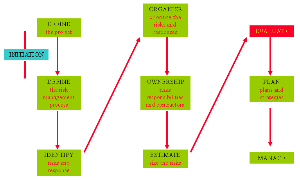Risk management - Evaluate - estimates
The Risk Management process
Evaluate - estimates
The aim is to consider the output of the estimate phase. In the latter phase we were assessing the probability distribution of the impacts of a particular risk.
Here we need to examine combining the risks and their affects on the project.
This may involve retracing our steps to the estimate phase or earlier to refine data.
Combination of individual risks to examine the net effect is usually carried our using computer software.
This approach can lead the analyst into a false sense of security. The simplicity to ‘add’ many risks can allow you to forget about interdependency between the risks and other factors.
In these circumstances the analyst may be ignorant of the mechanism of combining the risks and hence ignore or be unaware of issues arising from partial combination and concentrate on the end result.
Simplistically, risks can be combined in several ways:
- Independent addition
- Dependent addition (positive)
- Dependent addition (negative)
These are discussed elsewhere [see The Risk Management process EVALUATE independent correlation], [see The Risk Management process EVALUATE positive correlation] and [see The Risk Management process EVALUATE negative correlation].



